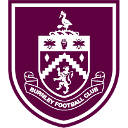
Burnley Football Club, also known as the Clarets, has a clothing history that reflects the club's long presence in English football and the club's close association with the city of Burnley. Founded in 1882, Burnley's jersey designs have evolved over the years, representing the club's tradition and status as one of the oldest football clubs in the country.
During its early years, Burnley's kits featured a variety of combinations, including blue and white stripes and green and white stripes. In 1910, however, the club adopted the now iconic burgundy and blue combination for their home kit, a design that has become synonymous with identity. by Burnley.
The decision to wear burgundy and blue was influenced by the colors of Aston Villa, a successful club at the time. The burgundy and blue kits have become iconic to Burnley's personality and have been a regular feature in their home kit ever since.
Over the years, Burnley's burgundy and blue home kit has seen minor changes in the design and manufacture of the kit. The burgundy color is complemented by blue shorts and blue socks, creating a classic and distinctive look that represents the club's tradition and history.
Burnley's badge has also undergone changes over time, featuring elements such as the club's initials, a lion and a soccer ball.
By the mid-20th century, Burnley had enjoyed considerable success, including winning the Premier League in 1960 and reaching the FA Cup final. During this period, the club's kit designs remained relatively consistent, with the burgundy and blue kits continuing to symbolize their hard-working and competitive style.
In recent years, while Burnley was playing in the Premier League, their kits were produced by manufacturers such as Puma and now Umbro. The burgundy and blue home kit features a modern design that pays homage to the club's history while introducing contemporary touches.
Burnley's kit history is testament to the club's enduring legacy and passionate fan support. The burgundy and blue kits symbolize Burnley's identity and evoke a sense of pride and solidarity among players and fans as they continue to strive for success and uphold the tradition of this historic football club.
During its early years, Burnley's kits featured a variety of combinations, including blue and white stripes and green and white stripes. In 1910, however, the club adopted the now iconic burgundy and blue combination for their home kit, a design that has become synonymous with identity. by Burnley.
The decision to wear burgundy and blue was influenced by the colors of Aston Villa, a successful club at the time. The burgundy and blue kits have become iconic to Burnley's personality and have been a regular feature in their home kit ever since.
Over the years, Burnley's burgundy and blue home kit has seen minor changes in the design and manufacture of the kit. The burgundy color is complemented by blue shorts and blue socks, creating a classic and distinctive look that represents the club's tradition and history.
Burnley's badge has also undergone changes over time, featuring elements such as the club's initials, a lion and a soccer ball.
By the mid-20th century, Burnley had enjoyed considerable success, including winning the Premier League in 1960 and reaching the FA Cup final. During this period, the club's kit designs remained relatively consistent, with the burgundy and blue kits continuing to symbolize their hard-working and competitive style.
In recent years, while Burnley was playing in the Premier League, their kits were produced by manufacturers such as Puma and now Umbro. The burgundy and blue home kit features a modern design that pays homage to the club's history while introducing contemporary touches.
Burnley's kit history is testament to the club's enduring legacy and passionate fan support. The burgundy and blue kits symbolize Burnley's identity and evoke a sense of pride and solidarity among players and fans as they continue to strive for success and uphold the tradition of this historic football club.

